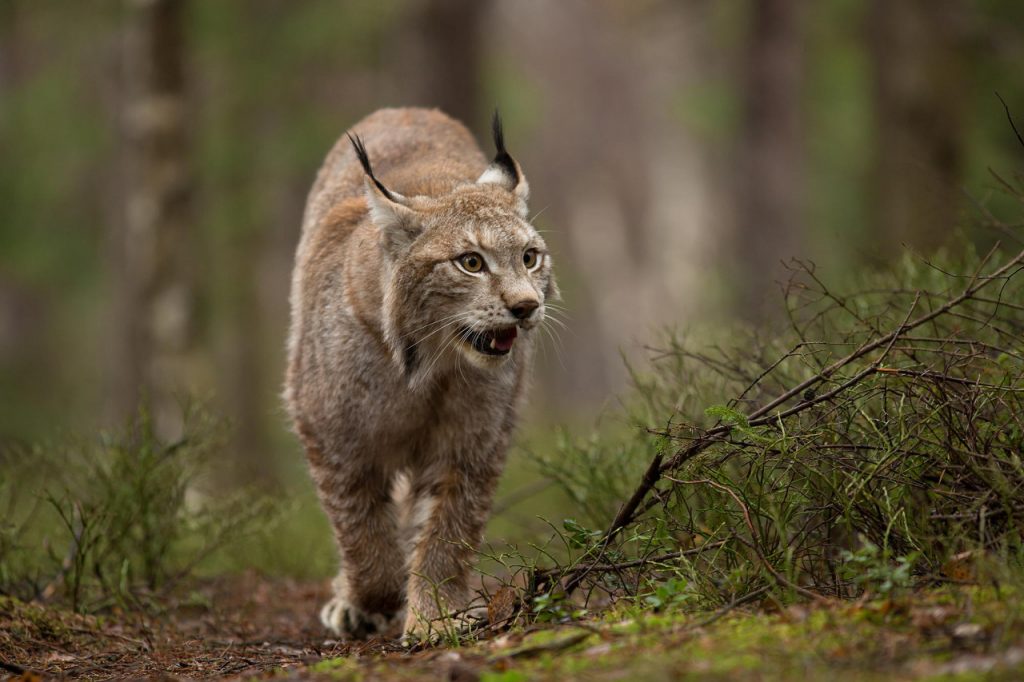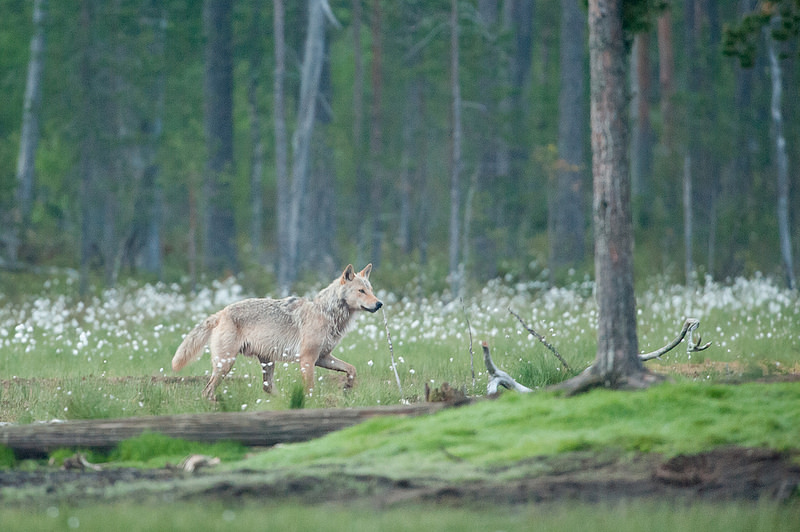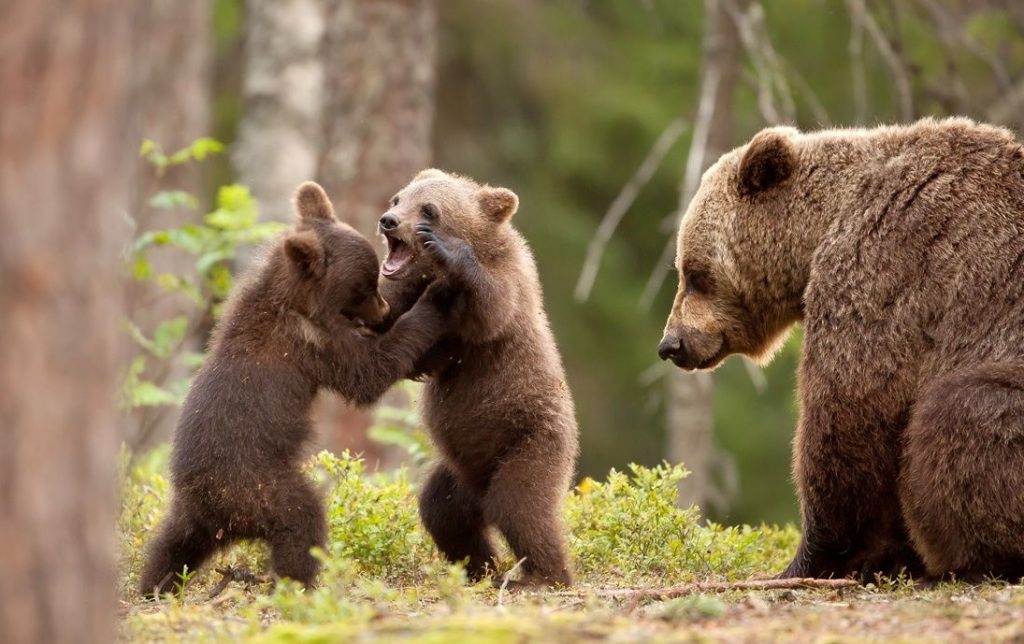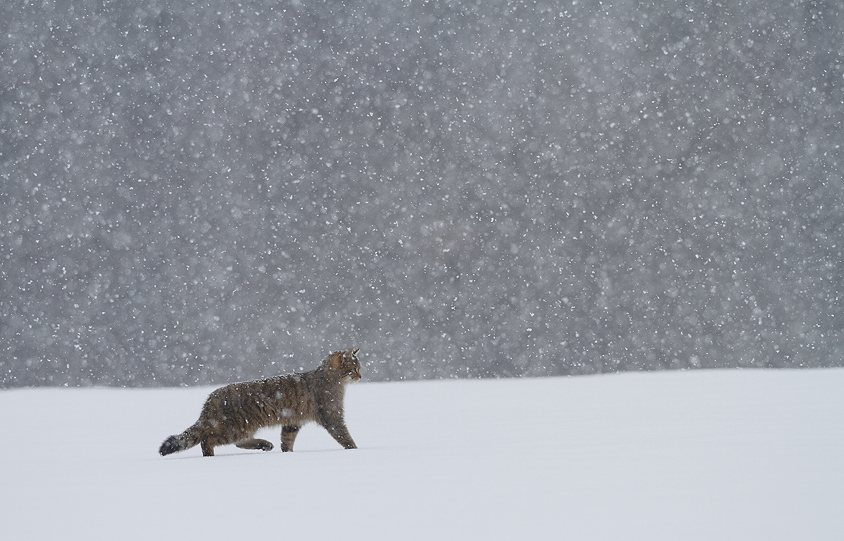By Marie Fouque.
Romania – On Tuesday, October 4, the Minister of the Environment, Water and Forestry Cristiana Pasca Palmer announced that the trophy hunting of large carnivores is now banned in Romania. It is prohibited in the European Union but this hunting is allowed if done in the name of the regulation of such an important population of carnivores that it is dangerous to humans, or to remove individuals in conflict with the human activity, attacking farms for example. Despite that in Romania an important financial industry has been created around the hunting of large carnivores that live in the region in fairly high numbers compared to the rest of Europe, the adepts of this kind of hunting can pay about 10,000 Euros for the trophy (slaughter and recover a piece of the animal’s fur, for example) of a brown bear, or a gray wolf.
This financial industry is due to the fact that in Romania, these are the organizations of hunters who are the foundation of the system. They identify the animals living in the area, and provide the informations collected: the estimated number of animals in the area and the estimated number of animals likely to cause damage and thus to kill. The Ministry of Environment can then give its approval. Also the funds raised for hunting could be used to repair the damage caused by carnivores. In 2016, the government agreed to kill 522 brown bears, 657 gray wolves, and 482 wild cats in a twelve month period. These quotas have been estimated by the University of Braşov, which itself is based on data from hunters, and believes that these are the right quota to keep the population under control, the country cash, according to the census, 6,500 brown bears 3,000 gray wolves and 10,000 wild cats.

But these figures are totally overrated. Hunting organizations, to identify carnivores, are using the fallacious method of counting almost every individual insight, risking of counting the same animal several times, not only on the same territory, but in addition, these animals having a relatively large area, several hunting organizations can count once or more each the same animal, which can skew the numbers to hundreds of animals around. Disregarding these data, prices, which should be explained in part by the payment of damages caused by animals, are exorbitant: the same study from the University of Braşov estimates the amount of damage caused by wolves to 15,000 Euros and bears to 176.000 Euros. 10,000 Euros, or even 5000, or even less, for a trophy, are sums which appear to poaching, and cannot be justified by the reimbursement of damage. But it was until now tolerated by the government. “The hunt for money was already illegal, but the green light was given anyway,” said Cristiana Pasca Palmer. “The damages – a clause in the Directive Habitats – were used as cover for trophy hunting.” Once the agreement given by the government, quotas were distributed among hunters’ organizations and thus sold as public hunting rights, that is international audience – since the accession of Romania to the EU in 2007 trophy hunting really developed itself.
Another funny fact is that the director of the National Bank of Romania, Mugur Isărescu, is also the director of the Hunting and Fishing Agency, and could thus enjoy the benefits linked to this post, namely hunt free trophy with his guests. One can imagine a sport hunting than a real interest in the protection of the inhabitants, or the regulation of species, as said earlier, protected.

The government has banned such practices on October 4, shortly after announcing the number of animals for slaughter and thus raised a wave of indignation from part of the Romanian population, divided on the issue, the pro-hunting is rather rural and anti-hunting city people, and numerous NGOs, as brown bears, gray wolves and lynx are protected species. The Minister of the Environment of Romania surprised with this prohibition that may seem absurd to some, given the estimated numbers of large carnivores living in the territory that could be seen as potential threats to man. The indignation of shepherds, farmers, having suffered an attack, fearing an attack, seems quite justified. But be aware that in the context of these risks or attacks already suffered, the setting aside of a potential threat is permitted, but it will be no more by hunters, by an individual or a stranger, but by the Department of wildlife emergency, which will act preferably with tranquilizer gun.
In addition the Ministry of Environment has also decided to form a committee of experts, composed by representatives of civil society, wildlife experts, hunters, farmers, and of the Romanian Academy, to find a reliable way to estimate the number of large carnivores in the territory. Cristiana Pasca Palmer also wants full transparency on the results, as she wants to improve the image of Romania, countrie sometimes accused of corruption and violating international laws.
Romania seems to have made a reasonable decision, though it displeases to many, trophy hunting of protected species is illegal in the European Union. But with the ban, then we can fear a rise in poaching. That is why there is a need for a European rule for the identification of animals, which can be done in manner totally reliable thanks to technologies with DNA for example, and allows to know and monitor well the wildlife. Also if populations are too large relative to the size of their territory, still more reduced due to human activity stretching, it may be possible to relocate, for example in other countries that don’t count a natural number of these big carnivores – although it is a fairy tale as the human population is hostile to this kind of species – or in natural parks, monitored and protected, which allow the European ecosystem to be spared in part of man and facilitates observation, scientific or not.
Unfortunately, harmony with nature is lost it is a fact. This is how herds of cattle are left without supervision for several days, because the shepherd goes engage in other activities and sleep in his bed while his cattle is exposed to threats. It certainly should not be generalize but it is a bad habit that has taken man, to flee his work or do everything at the same time and badly, everyone has his share of responsibility, and far be it from me to say all shepherds and farmers are lazy liars who aspire to destroy wildlife to facilitate and increase their production. For indeed now a shepherd or farmer who practice his traditional way of business, can fear to have not enough money.
And if in Europe, the basis for hunting bears, wolves, lynx, hides an ancestral feeling that is the fear of big carnivore, and today a natural desire to make the tradition live – and in some cases to make live the bank account – let the species the opportunity to recover from the excessive human activities that harmed them. For if hunting is a founding tradition of European man, flora and fauna animate the spirit of Europe.





